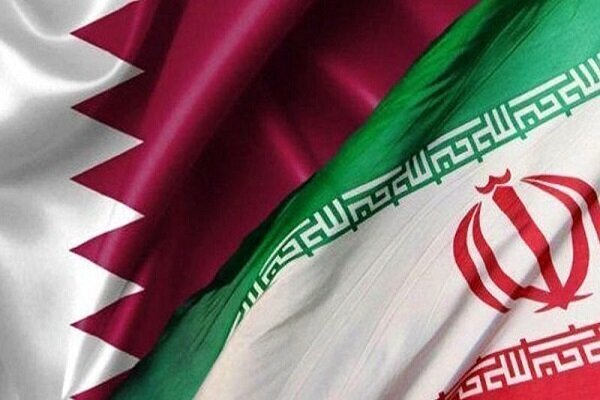Iran’s Non-Oil Exports to Qatar Rise 24% in Ten Months
TEHRAN—In the first ten months of the current Iranian calendar year (March 20, 2024–January 19, 2025), Iran’s non-oil exports to Qatar reached $112.416 million, marking a 24% increase compared to the same period in the previous year, according to Ruhollah Latifi, spokesperson for the Trade Development Committee of the House of Industry, Mining, and Trade.
The increase in exports reflects Iran’s growing economic ties with Qatar and highlights the potential for further expansion in non-oil trade sectors. Over the past few years, both nations have actively pursued trade diversification, focusing on industries beyond oil and gas. This surge in exports is a testament to the successful implementation of trade policies aimed at boosting bilateral economic cooperation.
Strengthening Bilateral Economic Relations
On February 17, Iranian Finance and Economic Affairs Minister Abdolnaser Hemmati met with Qatari Finance Minister Ali Ahmed Al-Kuwari during the AlUla Conference for Emerging Market Economies in AlUla city. The discussions centered on expanding economic and financial relations between the two nations, strengthening trade frameworks, and exploring new investment opportunities.

The meeting also highlighted the significance of Iran-Qatar trade relations in the broader context of regional cooperation. Given Qatar’s strategic location and its role as a major economic hub in the Persian Gulf, stronger ties between the two countries could enhance regional trade and investment opportunities.
10th Iran-Qatar Joint Economic Committee Meeting
The 10th Iran-Qatar Joint Economic Committee meeting concluded on December 12, 2024, in Doha, with officials from both nations pledging to enhance bilateral economic ties and increase trade to $1 billion annually. The meeting, co-chaired by Iran’s Minister of Energy Abbas Ali-Abadi and Qatar’s Minister of Commerce and Industry Sheikh Faisal bin Thani bin Faisal Al Thani, focused on expanding cooperation across multiple sectors, including energy, infrastructure, and trade.
During the meeting, both parties reiterated their commitment to long-term economic collaboration, emphasizing the need to remove trade barriers and facilitate the smooth exchange of goods and services. Officials also discussed implementing new trade agreements to streamline customs procedures, reduce tariffs, and enhance business-to-business interactions.
Strategic Initiatives and Investment Opportunities
Ali-Abadi emphasized the strategic importance of the partnership, noting that current trade between the two countries stands at approximately $200 million annually, with plans to increase it fivefold to $1 billion in the near future. He highlighted a significant energy project involving a 200-kilometer undersea power line to connect Iran and Qatar’s electricity networks. Initiated in March 2023, the feasibility study is in its final stages, with implementation set to follow approval. This project aims to revolutionize power transfer between the two nations during peak demand periods and enable electricity transit to third countries.
Ali-Abadi also expressed Iran’s readiness to welcome Qatari investors, envisioning mutual investments of at least $1 billion annually. Key focus areas include energy, transport, free trade zones, tourism, healthcare, and agriculture. Qatar’s financial resources combined with Iran’s vast market potential create opportunities for joint ventures that could benefit both economies.
Iran has been actively promoting its free trade zones (FTZs) as attractive destinations for foreign investment, offering tax incentives, streamlined regulations, and improved infrastructure. These zones present lucrative opportunities for Qatari businesses looking to establish a foothold in the Iranian market.
Trade Statistics with Neighboring Countries
Iran’s non-oil exports to its 15 neighboring countries reached 75.38 million tons, valued at $29.78 billion, in the first ten months of the current Iranian calendar year, marking a 28% increase in value compared to the previous year. These exports accounted for 59.2% of Iran’s total export weight and 62.4% of its total export value during this period.
Iran’s major non-oil exports include agricultural products, food items, petrochemicals, minerals, and construction materials. The country has been focusing on diversifying its export portfolio to reduce dependence on oil revenues, and Qatar has emerged as a key trading partner in this strategy.
Future Outlook
Iran and Qatar have set an ambitious goal to increase their annual trade volume to $3 billion by March 2025. This target encompasses exports, imports, joint investments, transit, re-exports, and joint production. Government officials from both countries are actively negotiating and providing infrastructure to achieve this objective.
Experts believe that Iran-Qatar economic relations will continue to strengthen in the coming years, supported by strategic initiatives and enhanced trade policies. The recent growth in non-oil exports and the strategic initiatives undertaken by both nations underscore a robust and evolving economic partnership, with promising prospects for the future.
As both countries work towards their trade expansion goals, businesses in Iran and Qatar are expected to benefit from improved market access, increased investment opportunities, and strengthened economic collaboration. With continuous efforts to facilitate trade and eliminate obstacles, the Iran-Qatar economic corridor is poised for substantial growth, setting a strong foundation for long-term prosperity.
Do follow gulf magazine on Instagram
for more information click here


